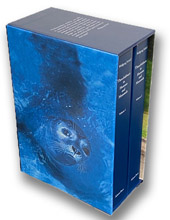Threefoldness in Humans and Mammals
Toward a Biology of Form
Quick Look
- An expanded edition of the astonishing study of mammals and what influences their size, morphology, habitat and embryonic development
- Five decades in the making, this is Wolfgang Schad's major work, shedding light on the size, form, colouration, physiology, embryonic development, behaviour and habitat of mammals
- Lavishly illustrated with over 1500 photographs and drawings which reveal the dynamic relationships between the various families, genera and species
- A must-read book for anyone interested in evolutionary biology
Two volume expanded and updated edition of this landmark work on mammals, which is the fruit of a lifetime of observation, research and meditation.
Description
This monumental, ground-breaking work is the fruit of a lifetime of observation, research and meditation on humans and our closest animal relatives: mammals.
The two volumes set out to answer questions such as:
-- Are mammals solely the result of random mutation and natural selection — essentially external factors — or do the internal dynamics of the organism itself play a role in determining their astonishing diversity?
-- Why do cattle have horns and deer have antlers?
-- Why do small chipmunks have dorsal stripes that run parallel to their spine, and tigers have stripes on their flanks that run parallel to their ribs?
Wolfgang Schad demonstrates how such fascinating phenomena can be traced to which organ systems -- nerve-sense, centred in the head; metabolic-limb, centred in the digestive organs and limbs; and circulatory-respiratory, centred in the chest -- are emphasised in a particular species. In this way he establishes the basis for a systematic understanding of mammalian morphology.
Schad shows how the different emphases come to expression through a mammal's size, morphology, dentition and coloration, and also in its preferred habit and embryonic development.
In almost five decades since its first edition, Wolfgang Schad has continued to add to what has become his life's major work. This expanded edition includes many new insights and additional chapters on antelopes, marsupials, bats, xenarthrans (armadillos, anteaters, and sloths), and pangolins, as well as on milk and mammalian embryology, mammalian embryology and much more. Over 1500 photographs and drawings as well as numerous diagrams illustrate the dynamic relationships between the various families, genera and species.
This expanded and updated third edition is presented in a sturdy, handsome slip case. We're delighted that this important work is once again available to readers.
Reviews
'This is an exciting time in biology and we are fortunate to have this new expanded edition of Wolfgang Schad’s life’s work. There is enough between the covers of these two volumes to stimulate thought, research, and application by another generation or two.'
-- Dr Mark Riegner, Prescott College
'[This book] is a profoundly important work which has the potential to steer biology and evolution theory in a more rational and positive direction.'
-- New View
Author
Professor Dr Wolfgang Schad (1935-2022) studied biology, chemistry, physics and education. He worked for many years as a Waldorf school teacher and as a lecturer at the Waldorf Teacher's College in Stuttgart. He was an Emeritus Professor at Institute for Evolutionary Biology at the University of Witten-Herdecke, Germany, a position he held until his retirement in 2005.

